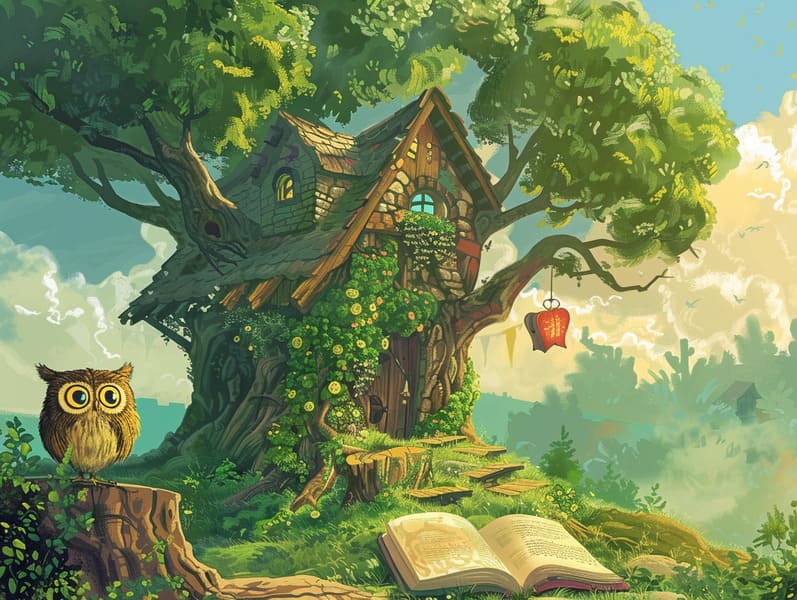Delving into the Background of Timeless Fairy Tales and the Unending Magic.
Delving into the Background of Timeless Fairy Tales and the Unending Magic.
Blog Article

Old fairy tales have timeless appeal. These stories have been recounted from one generation to the next long before they were ever put on paper. They developed from a variety of civilizations, including Indigenous traditions. They were initially transmitted among elders, often carrying themes and messages pertaining to the societal norms and beliefs of the time.
The famous Grimm duo, Jacob and Wilhelm, were among the first to collect many of these beloved stories. Their compilation, "Grimm's Folk Tales," included tales like "Cinderella," "The Bread Crumb Trail," and "Snow White," which have since become cornerstones in the world of traditional fairy tales. Similarly, Andersen's charming fairy tales, such as "The Mermaid," and "The Ugly Duckling," have gained the love worldwide, guaranteeing their place in the pantheon of famous fairy tales.
Despite being ancient, these stories remain as significant as ever, especially as children's bedtime stories. These enchanting tales are now available in multiple formats, including colorful picture books, enchanting animations, and online storybooks.
Their lasting appeal can be connected to several charming aspects:
Vital Lessons: Ancient fairy tales often share important moral lessons. Stories like "The Boy Who Cried Wolf" teach the merit of sincerity, while "The Hare and the Tortoise" underline the traits of resolve and humility. These stories offer young readers clear distinctions between truth and falsehood, helping to shape their moral compass in a tender yet profound way.
Sympathy and Perception: Ancient fairy tales frequently showcase personalities facing problems and hurdles, inciting audiences to understand with their struggles and boost their triumphs. For instance, "The Story of Beauty and the Beast" demonstrates the necessity of looking deeper to see the inner self of a soul, developing empathy and understanding.
Cultural Understanding: Many classic fairy tales are infused with the cultural contexts from which they emerged. Understanding these stories can provide intriguing perspectives into different beliefs, nurturing a sense of cultural awareness and respect.
Fantasy and Innovation: The fantastical elements in traditional fairy tales—spells and potions—motivate children’s creative minds. These tales bring readers to enchanted realms, inspiring creative dreams and a sense of astonishment that continues a lifetime.
Ancient fairy tales are not only fantastical but also edifying. They serve as fascinating tools in strengthening various mind and heart abilities in children. When timeless fairy tales are spoken, they promote language skills get more info by presenting new terms and meanings and sophisticated sentence structures. This practice also enhances hearing abilities and focus, as little ones track the narrative, enthusiastic to see what happens next.
Furthermore, debating the themes and characters of traditional fairy tales can foster evaluative skills and intellectual skills. Kids are educated to recognize patterns, forecast, and grasp cause and effect. These talks also benefit young ones communicate their thoughts and feelings, strengthening their emotional intelligence.
In today’s electronic age, the abundance of web-based fairy tales has made these tales more acquirable than ever. Online resources and apps make available huge assortments of famous fairy tales that can be read or listened via anytime, anywhere. Fairy tales told out loud are particularly prevalent, extending an interactive method for kids to engage with these entrancing tales. Narrated books and read-out-loud videos carry characters and settings to life, often accompanied by bewitching background sounds and background music that intensify the storytelling experience.
The lasting allure of classic fairy tales lies in their ability to shift to new eras while keeping their core values. Contemporary updates of these narratives often introduce more varied protagonists and modern settings, making them meaningful to today’s audience. However, the core values of braveness, empathy, and even-handedness remain unchanged, continuing to reach children of all ages.
Old fairy tales also offer a sense of peace and knownness. They give a ordered narrative with a straightforward beginning, middle, and end, often wrapping up with the settlement of conflicts and the triumph of right over wrong. This constancy can be placating for the young, sharing a sense of sturdiness in an fluid world.
Traditional fairy tales continue to captivate and inform new generations, maintaining their charm and applicability in modern society. As nighttime stories for kids, they put out a perfect blend of enchantment and education, aiding moral values, empathy, and creativity. The abundance of online fairy tales and the widespread nature of fairy tales read aloud assure that these timeless tales remain accessible to new generations.
By upholding and spreading these stories, we continue to cherish the rich tapestry of creativity and cultural heritage. Whether you are discovering a artistically illustrated book, viewing a internet library, or hearing an narrated book, the mystique of popular fairy tales is always within reach. These stories remind us of the unwavering nature of storytelling and its ability to bring us together across centuries and lands.
Even if you are reading a richly illustrated book, perusing a virtual library, or hearing an spoken story, the fascination of children's fairy tales is always within reach.
These narratives illustrate of the enduring power of storytelling and its ability to link us across generations and cultures, forming a connection that fascinates and enlightens alike.